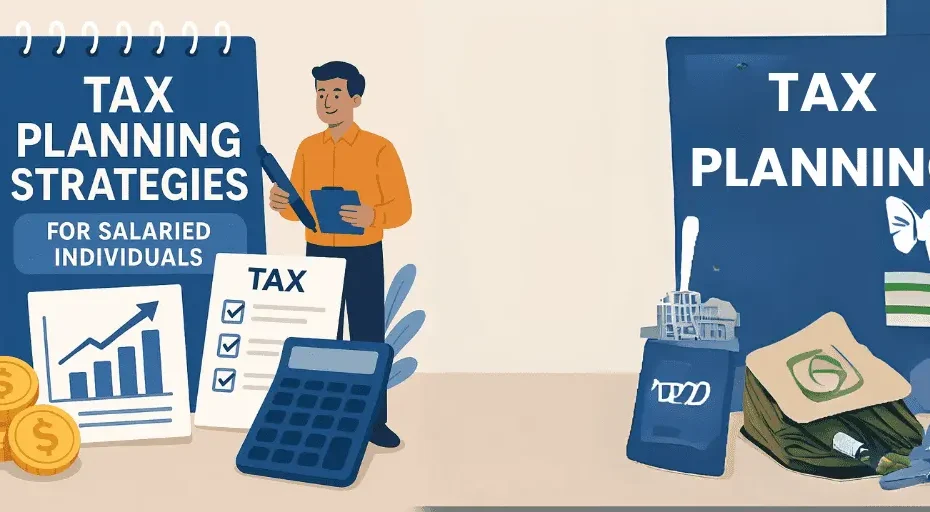Tax Planning Strategies for Salaried Individuals
Tax planning is an essential aspect of financial management for salaried individuals. Proper tax planning can help reduce liabilities and ensure compliance with tax regulations. One of the key elements in tax planning is understanding various tax deductions for employees. By leveraging these deductions efficiently, individuals can significantly lower their taxable income and maximize savings.
Understanding Tax Deductions for Employees
Tax deductions for employees refer to the various expenses and allowances that can be deducted from an employee’s taxable income. These deductions reduce the total amount on which tax is calculated, leading to lower tax liability. Understanding these deductions and utilizing them effectively is crucial for efficient tax planning.
Key Tax Planning Strategies for Salaried Individuals
1. Maximize Deductions Under Section 80C
One of the most commonly used provisions for tax savings is Section 80C of the Income Tax Act. Under this section, an employee can claim deductions up to a limit of Rs. 1.5 lakh per year. Some popular investments and expenses eligible for deduction under this section include:
Employee Provident Fund (EPF)
Public Provident Fund (PPF)
Life Insurance Premiums
National Savings Certificate (NSC)
Tax-saving Fixed Deposits (FDs)
Equity Linked Savings Schemes (ELSS)
Tuition fees for children
Using these investment options, employees can claim maximum benefits from tax deductions for employees.
2. Utilize Section 80D for Health Insurance Premiums
Medical expenses can be a significant financial burden, but they also offer tax-saving opportunities. Under Section 80D, employees can claim deductions on premiums paid for health insurance policies for themselves and their families. The limits are:
Rs. 25,000 for self, spouse, and children
Rs. 50,000 for senior citizen parents
This deduction not only provides financial security but also optimizes tax deductions for employees.
3. Claim House Rent Allowance (HRA) Benefits
For salaried employees living in rented accommodations, House Rent Allowance (HRA) is a significant tax-saving component. HRA exemptions depend on the following factors:
Actual HRA received from the employer
Rent paid minus 10% of basic salary
50% of basic salary for metro cities or 40% for non-metro cities
By carefully documenting rental payments, employees can maximize their tax deductions for employees under HRA.
4. Leverage Section 80E for Education Loan Interest
Higher education can be expensive, but the government provides relief through Section 80E, which allows deductions on interest paid on education loans. This deduction is applicable for a maximum of 8 years or until the loan is repaid, whichever is earlier. This is another effective way to optimize tax deductions for employees.
5. Save Tax Through Leave Travel Allowance (LTA)
Employees can claim Leave Travel Allowance (LTA) twice in a block of four years for travel expenses incurred on domestic trips. To claim this benefit, the employee must submit valid travel bills to the employer. This exemption is only applicable for travel within India.
6. Utilize Deductions for Home Loan Interest (Section 24B)
Employees who have taken home loans can benefit from tax deductions under Section 24B for the interest paid on the loan. The maximum deduction limit is Rs. 2 lakh per annum. Additionally, first-time homebuyers can avail additional benefits under Section 80EEA.
7. Standard Deduction for Salaried Individuals
A flat standard deduction of Rs. 50,000 is available to all salaried employees, reducing taxable income directly. This is one of the simplest and most effective tax deductions for employees.
8. Transport and Meal Allowance Benefits
Many employers provide transport and meal allowances, which can be claimed as tax-free perks. These include:
Meal vouchers up to Rs. 50 per meal
Transport allowance for daily commute
Employees should ensure they utilize these allowances to reduce their taxable income.
9. Save Through Voluntary Provident Fund (VPF) and National Pension System (NPS)
Contributions to the Voluntary Provident Fund (VPF) and National Pension System (NPS) provide additional tax benefits. Under Section 80CCD(1B), an additional Rs. 50,000 deduction is allowed for NPS contributions, enhancing overall tax deductions for employees.
10. Reimbursements for Work-Related Expenses
Employees should take advantage of tax-free reimbursements for work-related expenses, such as:
Telephone and internet bills
Books and professional journals
Relocation expenses
These reimbursements help reduce taxable income while ensuring compliance with tax regulations.
Conclusion
Effective tax planning requires a strategic approach to utilizing various tax deductions for employees. By understanding and leveraging deductions under different sections of the Income Tax Act, salaried individuals can optimize their tax liabilities and enhance their savings. Planning ahead and maintaining proper documentation are key to making the most of available tax benefits.
Implementing these strategies will not only reduce tax burdens but also help employees achieve better financial stability. Make sure to consult a tax advisor or financial planner to customize tax-saving strategies based on individual financial goals and employment benefits.
Our GST Services

All E-commerce Tax services
E-commerce tax services help online sellers navigate GST registration, compliance, return filing, TCS management, tax planning, and audits, ensuring efficient tax management and legal compliance.

GST Filing
GST filing is the process of submitting tax returns to the government, detailing sales, purchases, and taxes paid or collected, ensuring compliance with GST laws.

GST Registration
GST registration is the process where businesses obtain a GSTIN from the government, allowing them to collect taxes, claim input tax credits, and comply with GST laws.





